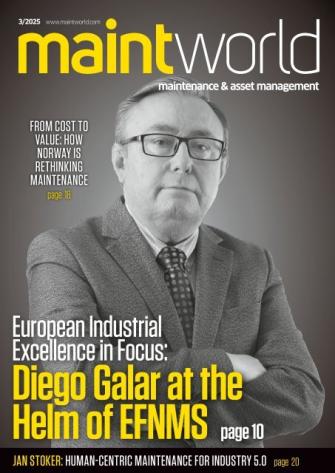Oil and Gas Industry Benefits OPC
There are many aspects in the Oil & Gas Industry. Some of the most important facets of automation with respect to oil and gas include drilling, information about the wells and the actual operation of the wells, and refineries.
Earlier this year we talked about the importance of open standards with respect to maintenance concerning wind power. Many exciting things are happening in the world of oil and gas, sometimes otherwise referred to as petrochemical.
There are many ways to look at the oil and gas industry. If you think about it from a consumer perspective, oil and gas provide the world’s seven billion plus people 60 percent of their daily energy needs, with the remaining 40 percent coming from coal, nuclear, hydroelectric and renewables. Many people think that oil and gas are resources that are used only for transportation, cooking and heating.
Oil is also used in the generation of electricity. Beyond the basics of what people think about oil and gas, we also need to think about it as a petrochemical feedstock, or that oil and gas are raw materials used to manufacture fertilizers, fabrics, synthetic rubber and plastics that really are the infrastructure components of everything we use, live and breathe.
From a business perspective, oil and gas represent global commerce on a very large scale. World energy markets are continually expanding and companies are spending billions of dollars annually to maintain and increase their oil and gas production.
From a political perspective there is the political geographic issue. Oil and gas flowing on a daily basis from exporting regions in the Middle East, Africa and Latin America; the oil and gas from these regions are then imported into other areas such as North America, Europe and the Far East. The importance of maximizing revenue and controlling cost is the fundamental principle in this widespread industry.
The Element of Asset Management
Everything we touch is affected by the oil and gas industry in some way, shape or form. We also have to think about the health, safety and environmental perspective of the oil and gas industry. Everyone is concerned for safety in all oil and gas operations, as well as the impact of new projects on the world inclusive of surface, sub sea and air quality.
Asset management and maintenance of all the devices, applications and components is a fundamental requirement, necessary to achieve the complete lifecycle of the oil and gas industry.
The most important part of maintenance in the petrochemical industry is to have a well-defined information model and for every object associated with an asset to have Metadata that actually tracks and maintains information for the corresponding asset. This then allows the analytical packages, which are the potential recipients of all the data that has been gathered behind the objects, to make intelligent decisions for things like condition-based monitoring.
OPC Unified Architecture is the architecture that the OPC Foundation has developed, supporting the ability for other organizations and vendors to develop complex information models. The organisations and vendors are then able to use the service-orientated architecture of OPC UA providing secure reliable interoperability for moving data and information from the sensors to the enterprise, truly enabling complex maintenance applications.
Collaboration becomes a fundamental requirement for all of the oil companies, subsea vendors and PC’s vendors. Collaboration in conjunction with other hardware and software component vendors helps to standardize the Metadata and information model so that predictive maintenance can be carried out.
So how does this whole collaboration architecture work you may ask? First off OPC has what is known as the information model architecture. The OPC classic specifications including data access, alarms and conditions, and historical data access are actually being modelled as information inside the OPC namespace. OPC UA has taken the classic OPC specifications and separated out the services from the information. This has enabled us to identify the key services of reading, writing, browsing, subscription and security and keep them generic from the information that they are operating on. We are also able to provide complete structures of information behind the data, called Metadata.
So let’s talk about the collaborations OPC is engaged in. In the oil and gas community one of the first areas I want to speak about is MDIS, which stands for MCS – DCS interface standardization. It is about all the major oil companies (the operators), all the major DCS vendors, and all the subsea vendors collaborated together to standardize on the objects for automation from the subsea world to the DCS. They wanted to standardize on their communication protocol and standardize on their information model, the benefits of which being reduction in cost and simplifying engineering.
Multivendor interoperability at its finest is leveraging the capabilities of the information model and OPC UA. OPC unified architecture companion specifications are developed that will describe all the objects inside the system and all the information necessary to provide the infrastructure for interoperability and compliance.
Towards Better Reliability
In other area of oil and gas is what is known as drilling system automation (DSA-TS). This is all about looking at the surface equipment of a drilling rig, and how do you model all of the objects and be able to provide information integration between multiple vendor systems. This is the collaboration between all the operators, the drilling contractors, the equipment suppliers, and the service companies that essentially are all cooperative adversaries all interested in information modelling and interoperability.
The companies working together will ultimately reap the benefits of OPC UA as there will be commercial off-the-shelf products that will easily be able to support the complex information models providing high degrees of maintainability in a very secure fashion. One of the key standards is known as the well information transfer standard, which will be the OPC UA information model and is used throughout the drilling industry.
Finally in the oil and gas world is what is known as the Standard Leadership Council. The OPC Foundation is proud to be engaged in this important initiative where all the upstream oil and gas consortiums are cooperating together. One of the specific initiatives that are coming out of this particular effort is the integration between OPC and Energistics. We are working at putting together a working group that will develop an OPC UA companion specification for PRODML.
Times are challenging in the oil industry today and cost control is high on the priority list for every company involved. One way operators are managing costs is to develop ways to remotely collect real time data from equipment deployed at well sites. This data includes production information as well as equipment health data, which can be processed by an analytics engine to improve efficiency and predict equipment failures. The challenge for many operators lies in getting the data from remote locations to the analytics engines.
OPC UA is one technology that bridges this gap by providing a state of the art secure transport layer and a flexible information model that allows operators to represent their data in a way that is understandable to their analytics applications. The growing numbers of offthe-shelf solutions that support OPC UA allow operators to further reduce costs by buying existing applications that provide interfaces to the different types of hardware used in the field. This OPC UA information model provides an abstraction that allows operators to hide the specific details of the hardware at each well site from the upstream applications, which means operators can easily adapt their systems as their needs change. In short, by standardizing the information model layer OPC UA allows operators to focus on what they do best: manage this information produced by their systems.
The oil and gas business is clearly a multifaceted global industry that impacts all aspects of everyone’s daily lives. The importance of maintenance and automation cannot be underestimated with respect to the oil and gas industry. Preventative and scheduled maintenance is highly dependent on the historical data that is gathered and analysed from every single component and device used, whether you’re thinking about drilling, or oil production from a well, or the actual refining of the oil. Oil companies, and anyone involved in delivering equipment for any one of the facets of the oil and gas industry are all interested in ways of maximizing revenue and lowering costs.
OPC provides the technology, infrastructure and the business value proposition to facilitate other standard organizations’ collaboration activities. While the oil and gas domain is one of the major opportunities, there are a number of other ongoing initiatives. I encourage you to check out the OPC Foundation website for more information on the topics of OPC integration with building automation, machinery optimization and machine tool connectivity for example.
Oil and gas represent global commerce on a very large scale.
A Heat Pump Plant Turns the Carbon Footprint of Textile Fibre Production Negative
Valmet launches intelligent fiber furnish control to secure better refiner operation
Valmet introduces the Valmet Fiber Furnish Control application package for board and papermakers to stabilize refiner operation for maximized production efficiency with ensured furnish quality. Based on real-time measurements of multiple fiber properties and freeness, the control features advanced feedback and feedforward solutions together with model predictive control.







![EMR_AMS-Asset-Monitor-banner_300x600_MW[62]OCT EMR_AMS-Asset-Monitor-banner_300x600_MW[62]OCT](/var/ezwebin_site/storage/images/media/images/emr_ams-asset-monitor-banner_300x600_mw-62-oct/79406-1-eng-GB/EMR_AMS-Asset-Monitor-banner_300x600_MW-62-OCT.png)



